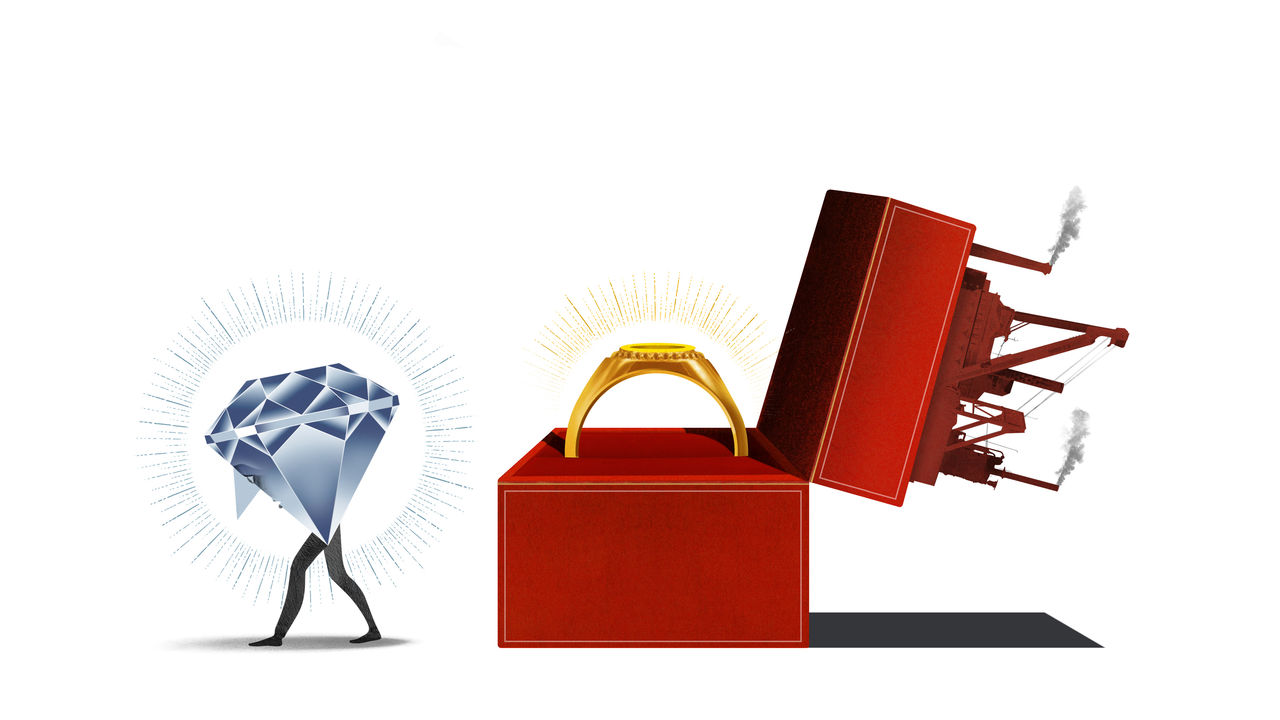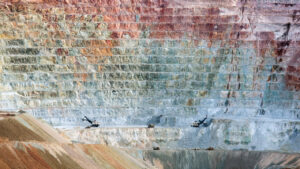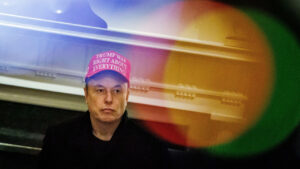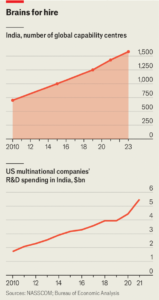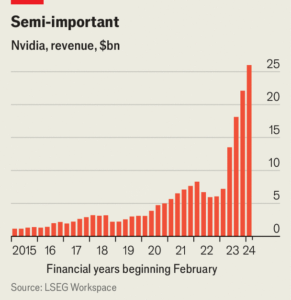
Your browser does not support the <audio> element.
In February 1908 Joseph Asscher, a master cutter of diamonds, cleaved the Cullinan at his workshop in Amsterdam. So tough was the South African diamond, the largest ever found, that Mr Asscher’s first attempt split his blade instead. The diamond industry is once again gripped by a nail-biting separation. This time, its most important company is facing the chop.
After rejecting a takeover proposal from BHP, the world’s biggest miner, Anglo American announced a radical restructuring of its business on May 14th. As well as selling its coal, nickel and platinum operations, the British mining firm will shed its 85% stake in De Beers (Botswana, where its richest diamond mines are located, owns the rest). BHP has until May 29th to make a new offer for Anglo. Whatever happens, De Beers’s change of ownership will mark the end of one of its most enduring relationships—Ernest Oppenheimer, Anglo American’s founder, joined the company’s board in 1926. For the industry, it signals the biggest shake-up since 2000, when De Beers abandoned its policy of trying to control diamond prices by managing supply.
Anglo could hardly have chosen a worse time to sell its diamond operation. De Beers’s revenue fell by a third last year and Anglo marked down the value of its investment by $1.6bn, to $7.6bn. Sales at its April “sight”—an event where De Beers offloads its rough diamonds—were $445m, down 18% year on year. The company blames weak consumer demand in America and China. More worrying still is the threat from man-made diamonds. Lab-grown stones, made using a hot, gassy process called “chemical vapour deposition”, are essentially identical to the ones De Beers pulls from the ground—but cost around a fifth as much.
These brilliant creations are now bulldozing parts of the diamond business. According to Paul Zimnisky, an industry analyst, they will account for a fifth of the value of diamond jewellery sales globally this year. Consumers who many in the industry expected to remain loyal to the mystique of a billion-year-old diamond are increasingly turning to the lab-grown variety. Edahn Golan, another analyst, says that in America nearly half of the diamond engagement rings sold this year contain a lab-grown stone. Pandora, a big Danish jeweller, saw sales of lab-grown sparklers soar by 87%, year on year, during the first quarter.
How scared should potential buyers of De Beers be? It is tempting to see the firm as a relic, soon to be crushed in an avalanche of innovative man-made rocks. Lightbox, the lab-grown operation it launched in 2018, has done little to dull the threat. Pessimists, however, risk applying an excess of rationality to the irrational business of selling engagement rings to loved-up blokes. To save itself De Beers must convince them to distinguish between two indistinguishable diamonds. That may prove even harder than persuading them to hand over thousands of dollars for a stone in the first place. But it is not impossible.
A growing wedge in price between natural and lab-grown stones will do some of the work. That gap will probably widen further as Chinese and Indian newcomers compete to produce a potentially unlimited supply of lab-grown diamonds. The cheaper these man-made rocks become relative to the original, the less attractive they could prove to buyers who regard the price of a ring as a gauge of their affection, or see the jewels as heirlooms to be passed from generation to generation.
De Beers must also rediscover its flair for marketing. During the 20th century the firm spent lavishly on ads that extolled diamonds—and not just those sold by De Beers (though that used to be most of them). Faced with protests against blood diamonds, it deftly promoted itself as a supplier of the conflict-free variety. Yet its marketing muscle has atrophied. The Natural Diamond Council, a coalition of firms formed in 2015 to pool hawking resources, has lost the help of Alrosa, a big Russian miner under sanctions.
“A diamond from the mine is for ever” would be a less catchy slogan than the 1947 original. Some of De Beers’s actual attempts have been even worse. When launching Lightbox, it promised something that “may not be for ever, but is perfect for right now”. Such a brutally unromantic sentiment may succeed in turning would-be grooms off a lab-grown stone. But the company must still convince them to pay up for the original. The dripped-out rapper conjured by the company’s boast that diamonds are “Nature’s mic drop” does little to sell the permanence of their bling.
Get De Beers in, lad
Whoever buys the firm, then, must be capable of marketing miracles, as well as running a mine. Such hard-hatted admen are rare, if they exist at all. If BHP ends up buying Anglo, it would do so primarily for its copper business, and might well divest De Beers (it shed its own diamond operation a decade ago). Few other miners are likely to be interested as they, too, focus on the green-metals boom. Some also speculate that the government of Botswana, which, in addition to its stake in the company, owns some mines jointly with De Beers, might decide to play a bigger role, though a buyout by the government looks unlikely.
That leaves two other sorts of buyers, if De Beers is to avoid going it alone on the public markets. Among financial investors, sovereign wealth funds from the Middle East are the favourites. Their coffers are deep and Dubai is fast emerging as a hub for the diamond trade owing to its proximity to India and lax regulations. Another option would be for De Beers to become integrated into a luxury giant. The chairman of Richemont, owner of Cartier, has already ruled out making an offer. LVMH could conceivably combine De Beers with Tiffany, the jewellery business it bought in 2021. There, at least, is an outfit familiar with glittery goods—and the gaudy prices that come with them. ■
If you want to write directly to Schumpeter, email him at schumpeter@economist.com
To stay on top of the biggest stories in business and technology, sign up to the Bottom Line, our weekly subscriber-only newsletter.








